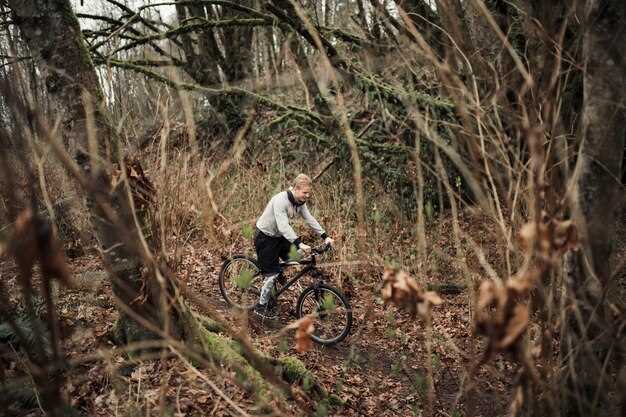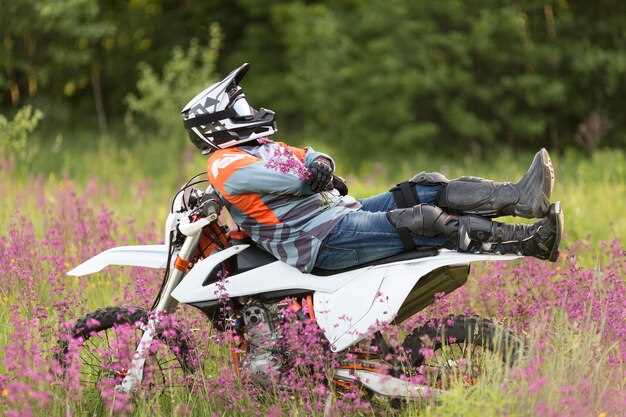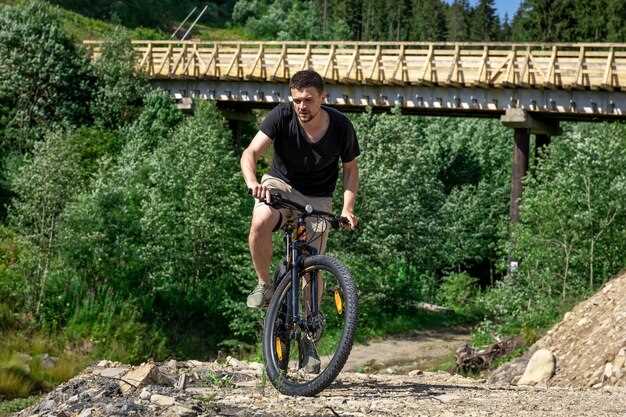
For those who seek adventure on two wheels, navigating rocky and muddy trails presents both challenges and opportunities for skill development. The unique terrain requires not only physical endurance but also a refined understanding of riding techniques that can make the difference between a successful journey and a frustrating experience.
Riding on rugged paths demands precise control and effective navigation strategies. Riders must learn to adjust their body position, maintain balance, and select the right lines in order to maneuver smoothly over obstacles. Mastering these techniques is essential for tackling unpredictable landscapes and maintaining momentum.
Furthermore, managing different weather conditions plays a crucial role. Muddy trails can be particularly tricky, as traction varies greatly with moisture levels. Understanding how to read the terrain, adjust tire pressure, and apply appropriate braking techniques can significantly enhance a rider’s performance. Through practice and experience, mastering these skills will lead to more enjoyable and safer rides on challenging trails.
Optimizing Body Position for Stability on Rough Terrain
Maintaining an optimal body position is crucial for stability when navigating rocky and muddy trails. A well-executed posture enhances control and reduces the risk of losing balance. Here are essential guidelines to achieve the ideal body position:
- Low Center of Gravity: Keep your body crouched to lower your center of gravity. This helps in maintaining balance and allows for quicker reactions to obstacles.
- Feet Placement: Position your feet shoulder-width apart on the pedals. This stance maximizes stability and helps with weight distribution.
- Knees and Elbows: Slightly bend your knees and elbows. This flexion acts as shock absorbers when hitting bumps or uneven surfaces.
- Body Lean: Lean your body slightly forward when descending, and shift backward uphill. This adjustment helps in maintaining traction and balance on varying gradients.
Correctly positioning your body is just as important as bike handling skills. Focus on the following elements:
- Head Position: Keep your head up and eyes looking ahead. Anticipating obstacles allows for timely adjustments in your body position.
- Core Engagement: Engage your core muscles to provide additional stability. A strong core acts as a foundation for your body during rough rides.
- Weight Distribution: Shift your weight accordingly to maintain traction. When approaching obstacles, lean back to avoid forward pitching, and lean into turns to aid traction.
- Forearm Position: Keep your forearms parallel to the ground to absorb shocks effectively. This position prepares you for rapid changes in terrain.
Practice these points in a controlled environment before tackling more challenging paths. Consistent application of these techniques will drastically improve your stability and confidence on rugged trails.
Selecting the Right Tires for Mud and Rocks

Choosing the appropriate tires for riding on muddy and rocky trails is crucial for maximizing traction and ensuring safety. The right tires can significantly enhance your riding experience by providing better grip and stability.
Tread Design: Look for tires with an aggressive tread pattern. Deep lugs and spaced-out tread elements are essential for mud as they help to channel away water and prevent the tire from becoming bogged down. A combination of wide and narrow lugs can offer versatility, allowing you to navigate both slippery mud and rugged rock surfaces effectively.
Rubber Compound: The compound of the tire also matters. Softer rubber compounds typically offer better grip on rocky terrain and in muddy conditions. However, softer tires may wear out faster on hard-packed surfaces. Select tires that strike a balance to fit the conditions you’ll encounter most.
Width and Volume: Tire width affects flotation and grip in mud. Wider tires provide a larger surface area, which helps to prevent sinking into soft ground. However, extremely wide tires may struggle on rocky surfaces. Opt for mid-width tires that can perform well across varied terrains without sacrificing performance.
Pressure Settings: Adjusting tire pressure can influence traction. Lower pressures allow tires to conform to uneven surfaces, enhancing grip on rocks while improving flotation in mud. Be cautious with lower pressure in rocky terrain to avoid pinch flats; finding the right balance is essential.
Seasonal Considerations: If you’re riding in specific seasonal conditions, consider terrain-specific tires. Some tires are designed for wet conditions with enhanced siping, while others may excel in dry, rocky environments. Research and select tires based on the most common conditions you expect to face.
By carefully evaluating tread design, rubber compound, width, pressure settings, and seasonal requirements, you can select the optimal tires for your riding adventures in muddy and rocky trails. This thoughtful choice will not only improve performance but also enhance your overall riding confidence.
Braking Techniques to Prevent Skidding and Maintain Control

Braking effectively on rocky and muddy trails is crucial for rider safety and performance. To maintain control and prevent skidding, a few key techniques should be mastered.
1. Use Both Brakes: Instead of relying solely on the front or rear brake, utilize both simultaneously. The front brake provides significant stopping power, while the rear brake aids in stability. Balance your weight forward when using the front brake to avoid flipping over the handlebars.
2. Modulate Brake Pressure: Apply brakes gradually and in a controlled manner. Sudden, hard braking can lead to loss of traction. Instead, use feathering techniques, where you lightly modulate brake pressure to maintain grip and control over uneven terrain.
3. Keep Your Weight Centered: Positioning your weight correctly is essential for maintaining traction. When descending or braking, shift your body slightly back but keep your center of gravity low. This helps prevent the rear wheel from lifting or sliding out, offering better control.
4. Look Ahead: Always anticipate obstacles and changes in terrain. By keeping your eyes focused a few meters ahead, you can adjust your braking accordingly. This proactive approach allows you to preemptively react rather than over-brake or skid.
5. Practice on Various Surfaces: Familiarize yourself with different trail conditions by practicing your braking techniques on various surfaces. This helps you to learn how your bike responds to braking on rocky, muddy, or wet trails, building your confidence and improving your skills.
6. Engage in Controlled Stops: Practice stopping in controlled situations. Gradually decrease speed while honing your ability to stop without skidding. This skill is vital when navigating in unpredictable terrains where grip varies significantly.
By mastering these braking techniques, riders can significantly enhance their control on rocky and muddy trails, reducing the risk of skidding and ensuring a safer, more enjoyable riding experience.